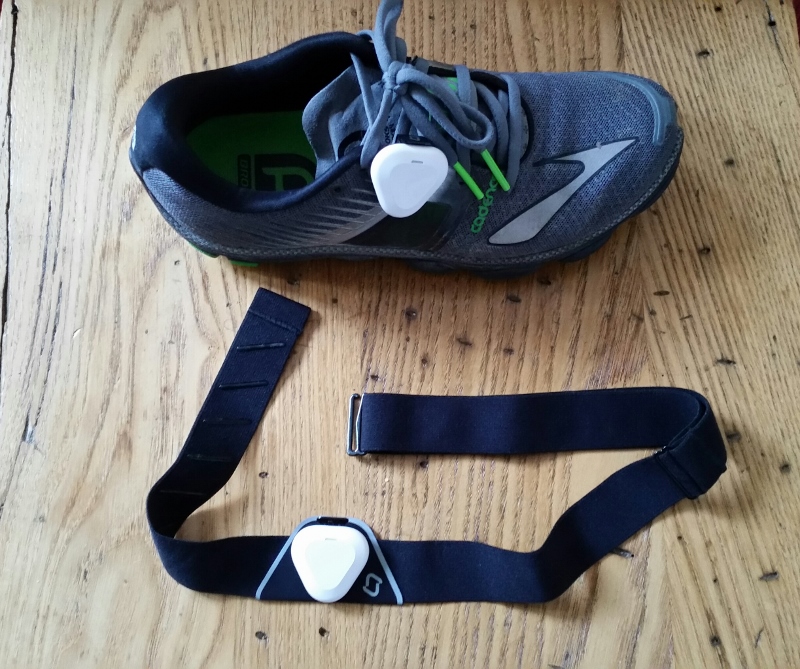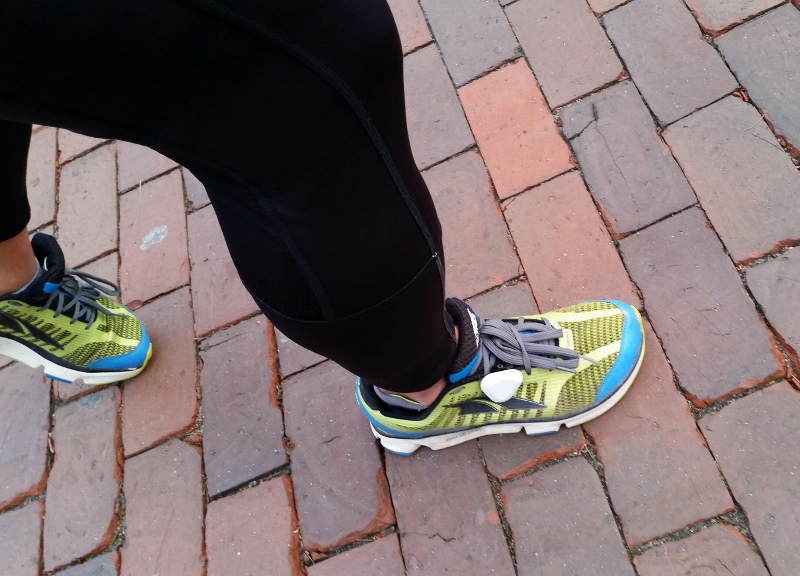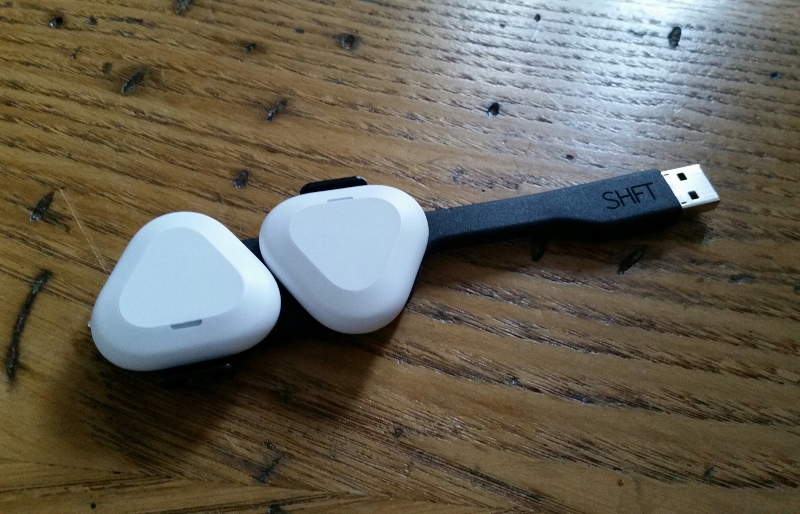Written by Keri Ouellette, Field Test Expert and TriSports Ambassador Athlete
SHFT Intelligent Virtual Running Coach is the latest in running technology, using wearable pods to capture data on running form. The goal of the Danish company, founded in 2014 (under the name Learn2run) is to create the most intelligent virtual running coach to improve running technique and efficiency. The first prototype was developed in 2014, and after much collaboration with elite runners, doctors, scientists and the Swedish design studio, Howl, the current SHFT product launched in November 2015.
The SHFT is designed to capture a variety of running metrics to provide real time feedback on running form as a virtual coach based on the data collected through the pods. The SHFT running tracker consists of two small triangular pods, one to attach to your shoe and one to be worn on the chest. These pods capture data as your running which is sent to your phone and feedback is provided through your headphones via the SHFT app.
Easy to Use
I’ll begin this review with the disclaimer that I’m not much of a technology buff, having just purchased my first GPS running watch less than a year ago. That being said, the pods are very easy to use and the whole setup took only a few minutes– the time it took to download the SHFT app. Once the app is installed, you’re ready to start running. The pods have a simple design and easily clip onto the side of any running shoe. I’m not sure how exact the positioning of the pods must be, but the data seemed to be on target when I tested it. To charge the pods, they clip onto a strip with a USB connection. To use the product you need to carry your phone while you run. To start, SHFT requires the user to manually start, stop, and pause the run through the app.
Measure your Metrics
SHFT provides data on more aspects of running biomechanics than I could have ever imagined. In addition to the usual speed, distance, pace, cadence information, the pods also track things like body angle, body bounce, landing and toe-off angle, step length, watts and brake effect. Many of these metrics are not easy to interpret and compare through a video analysis, so having numbers to compare over time allows for a better evaluation of running technique and improvement. It is a lot of information to absorb, especially since you may not have any baseline to understand what the numbers mean for many of these metrics, but once you do a few runs, you can compare your personal data over time. It’s useful to see how each of these metrics changes within one workout. The app provides a simple explanation of what each metric. It would be nice to also have an explanation of how each metric affects running efficiency or potential for injury. Additional information on the website or app would be helpful about how to read the data and what it means. The Run with Power book dives deeper into these metrics to help you better understand running with power.
The Virtual Coach
Beyond the data collection, the other aspect of the SHFT is it provides coaching (as the name implies). The idea of real time feedback on running form seemed useful, however, the SHFT coach is not as flexible as I would have liked. The coach selects the component of running form that she would like you to focus on and provides feedback for only that metric during that particular workout. I’m not sure if selection of metrics is standard or not, but the ability to make adjustments to the coach’s workouts would be nice (admittedly, this criticism reflects of my own preference for self-coaching). Despite that, I found that getting feedback while running helped me really focus on my form and increase awareness of changes to my running form when I slowed down or started to fatigue.
Run Analysis on the Cheap
Other than this type of pod technology, the only other way to obtain this detailed running analysis is in a professional running lab. SHFT provides an inexpensive way to capture running form metrics. You may have to do a bit of research to understand what the data means and what form adjustments need to be made if you’re unfamiliar with some of the metrics.
Overall: A Great DIY Option
Since running is the sport where athletes are least likely to consult a coach, a DIY option for getting this information is tremendously useful for anyone who wants to improve their running form and efficiency. Runners also tend to experience a lot of overuse injuries, as a result of, sometimes very minor, issues with running form. Understanding one’s own running mechanics could likely prevent many overuse injuries. Overall, the SHFT running coach is a great way to understand and improve your running form. The coaching aspect could improve on the customization ability, offering athlete’s a choice of which running component to practice. I hope that SHFT continues to improve on this exciting technology to continue to make advancements for a user-friendly product.
![]()
 About the Author: Keri Ouellette is a longtime runner and swimmer, as well as an age group triathlete for over six years. She recently moved to Portland, Maine, where she’s now training, racing, and trying out new winter sports.
About the Author: Keri Ouellette is a longtime runner and swimmer, as well as an age group triathlete for over six years. She recently moved to Portland, Maine, where she’s now training, racing, and trying out new winter sports.



